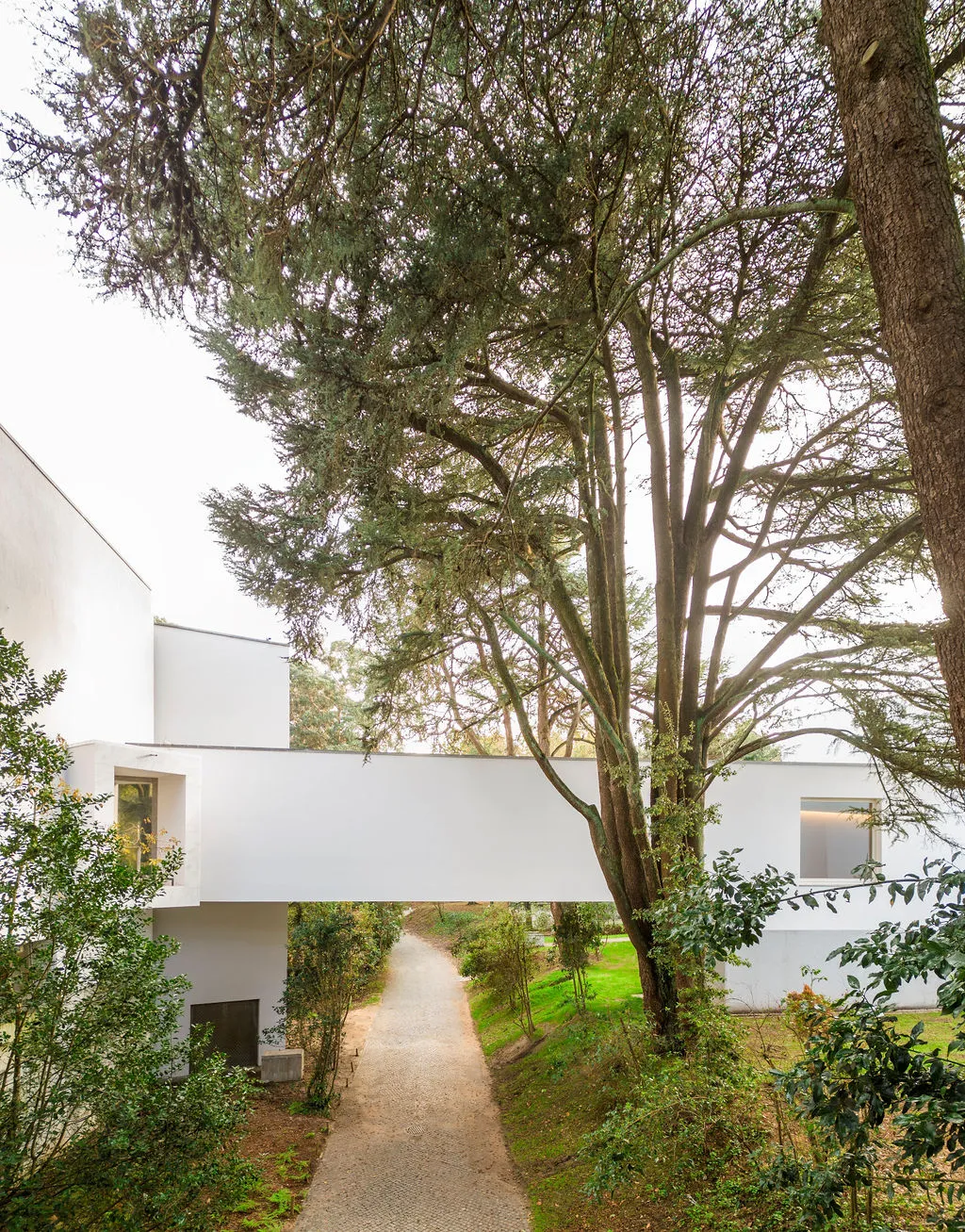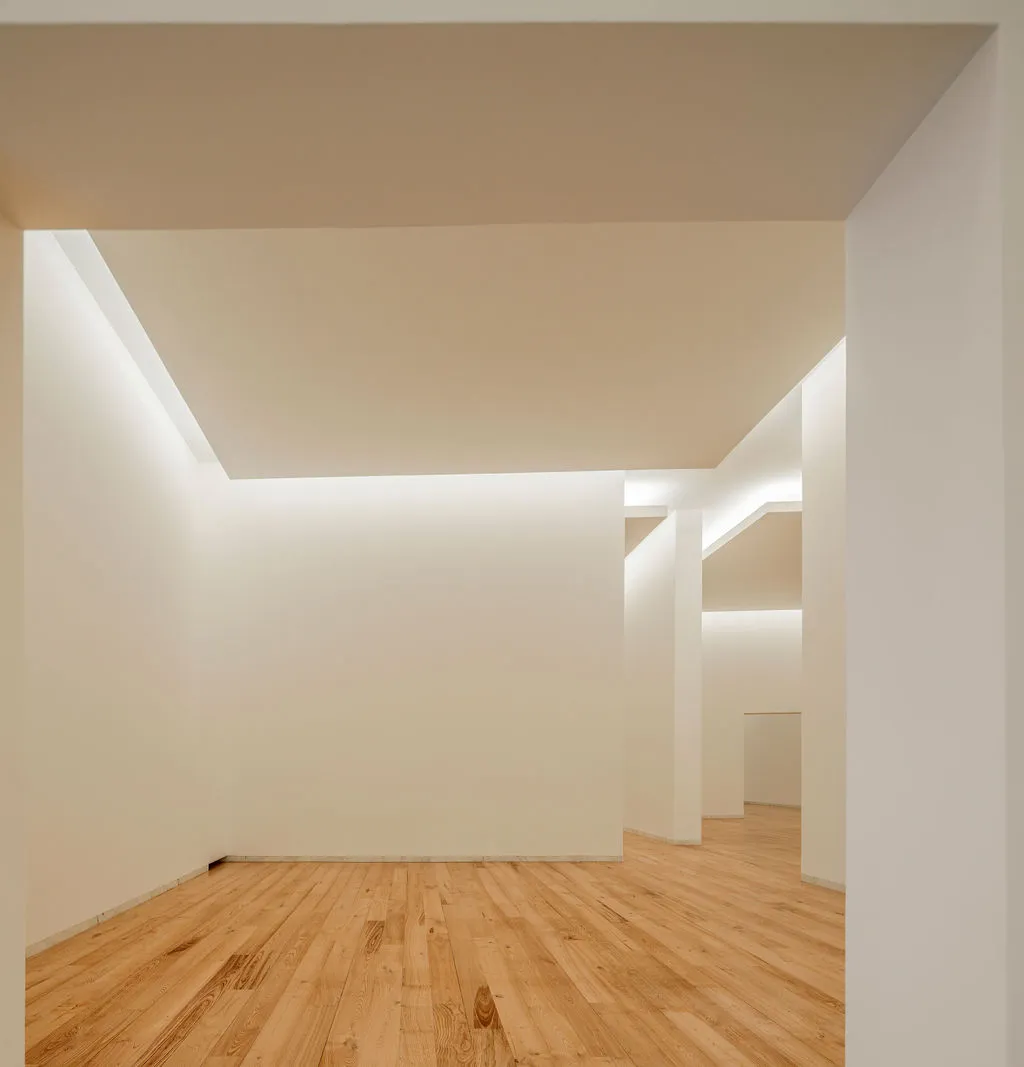F L A U N T


In Porto, Portugal, there are cathedrals that tower over the East Atlantic and hill-scaling vineyards that spill out against the Douro River. This river interrupts the terrain of Portugal’s northern region and rolls with quickness through its city that’s famed for port wine and religious architecture. Whether there’s sidewalk construction in front of Victorian-era houses still standing, or temporary scaffolding inside the historic Church of Saint Francis, it is a place where the present so clearly becomes the direct meeting point for the past and the future, a metropolis that, with its blue-and-white tiled history on display, remembers where it came from and knows where it’s going.

It’s fitting, then, that Porto is home to the Serralves Foundation, a cultural establishment founded as a public resource for education about art, architecture, and the environment. Home to the artifacts of yesterday, the foundation epitomizes the promise of tomorrow. Situated on green acres, you can move between contemporary art collections at the museum, head to the cinema house for film history, and walk a bridge through treetops to visit the cows, donkeys, and chickens grazing pond-side at the farm. Or maybe you’d like to enjoy a cup of tea at the tea house, buried within garden greenery and outdoor sculptures.

On February 24, the Serralves Museum publicily debuted its latest expansion, a new wing dedicated to collection and architectural space, designed by acclaimed 90-year-old architect Álvaro Siza. The wing is established with two exhibitions: Improbable Anagrams, a permanent, rotating presentation curated by museum director Philippe Vergne that showcases a diverse amalgamation of the museum’s collection from global artists spanning all mediums and generations; and C.A.S.A., (a double meaning, literally for the Portuguese word “house,” and an acronym for Collection Álvaro Siza, Archive), curated by António Choupina. C.A.S.A. reveals to viewers the weight of Siza’s contribution to architecture, emphasizing the buildings of his creation that communities rely on: Houses of Faith, Knowledge, Culture, Family, Work, Idleness, and of course, Home.

The aesthetics of the architect’s vision run down to the roots of the Serralves Museum. He was the architect upon its 1999 founding, as well as the Manoel de Oliveira Cinema House in 2019, and in 2021, constructed the Gardener’s House and restored the Serralves House. The transition from the original museum building to the Álvaro Siza wing is a seamless one in design details and material, perhaps best illustrated in the bridge that leads into the unique annex. Suspended between the original building and the new structure, one stands within the tangible evolution between the museum and Siza. With no knowledge of this extension one might not recognize its newness, as if the wing were built in the late nineties with the rest of the building.

This decades-long collaboration between Siza and Serralves serves as a cultural axis not only to Portugal, its heritage, and history, but also to international forthcoming generations that seek beauty in utility, who seek to to build an evolved future upon the fragments of those that came before them.

The wing holds three floors, one reserved for Serralves collection archives and the other two for contemporary art and architecture. The space for contemporary art collections is structured like a cluster of small galleries, laid out so museum visitors can view the objects of different rooms all at once. The formation requires a calculated, pre-designed course of viewing while inviting curators to explore all possible dialogue between different works, which are visible through triangular and square openings between rooms. Such architectural movement and triangular geometry are integral to Siza’s work.

Upon entrance of the wing, guests are greeted with Improbable Anagrams. The museum leads with mystery here, in an empty corridor, with sound echoing around you. The first piece of the exhibition is not seen, but heard: created by Lisbon-based sound artist Luisa Cunha, who repeats, “é o que é,” or, “it is what it is.” The choice, as museum director Philippe Vergne explains, “Because the collection is what it is.”
Next is the first physical piece seen in the exhibition, although it does not physically exist within the exhibition, nor in the building at all. A window to the outside divulges a black sculpture against a tree, created by Portuguese artist Rui Chafes, its placement stiffening the intention of curators to utilize the space’s architecture to breathe new life into the Serralves Collection.
Other artists eclectically featured in Improbable Anagrams range from Julie Mehretu, Paula Rego, Arthur Jafa, Ângelo de Sousa, Zanele Muholi, and Merce Cunningham, only scratching the surface of the exhibition and the museum’s collection.


Moving into C.A.S.A., museumgoers are surrounded by the largest collection globally of Siza’s designs. Divided into nine sections, one for each decade of his life, the archive includes his early sketches, his contributions to social housing in post-revolution Europe, and additional pieces created at his leisure and donated to the museum. Nearing the end of C.A.S.A. an empty box of Camel Yellows, Siza’s cigarette of choice, is featured in a glass display. Vergne claims the logo once featured a pyramid, which is the reason the architect decided to start (and never stop) smoking this tobacco brand. Later at an inaugural dinner, I sit next to a woman who works with the museum. She tells me that Siza is always going. “His mind never stops, he is always drawing out ideas, even if it’s on a pack of cigarettes,” she says.
We’re sat across the room from Siza, the man of the hour in direct view. Perched at a long dining table amongst Portugal’s Prime Minister, The Minister of Culture, and Porto’s Mayor, he allows applause, speech, and acclaim to wash over him. He graciously engages with the server who replenishes his plate with bread rolls every few minutes, and it’s apparent that Siza isn’t here to be applauded at all. Yes, the confrontation of C.A.S.A. evokes emotion because it’s beautiful and because the work is functional to a society’s welfare and progression. And yes, it is undisputedly impressive–the amount of work on display is even more imposing when you register that what you see is a fraction of this man’s portfolio. But the soul of the exhibition is effective because of its subject. C.A.S.A. is stunning because in the essence of its parts you are left with the architect’s conviction to create with no mercy. Take away the new wing, take away the walls of Serralves, never mind the recognition from cardinal figures and institutions, and Siza would still be somewhere scribbling on a cigarette box.
